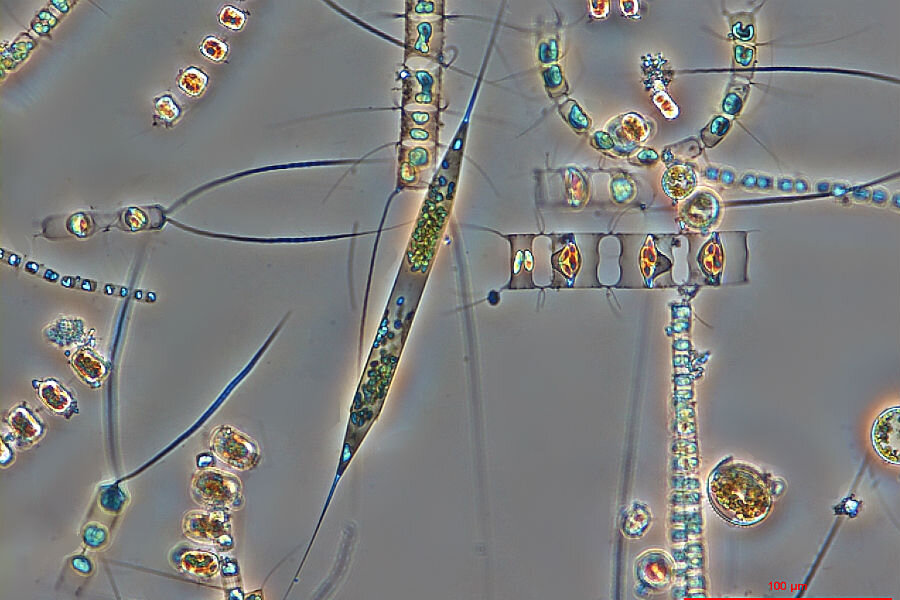How tiny plankton brighten the clouds over Southern Ocean
Loading...
Researchers have uncovered findings in the Southern Ocean that reaffirm the importance of plankton to our planet's temperatures.
The answer lies in the activities of plankton, tiny sea creatures more commonly associated with feeding whales than promoting climate change, according to a NASA-funded study that was released Friday in Science Advances journal.
Here’s how it works: like most plants, green phytoplankton get their color from chlorophyll, a chemical that also allows them to absorb sunlight. In the process of doing so, plankton release a compound named dimethylsulfoniopropionate, or DMSP.
Scientists already knew that DMSP helps clouds form by converting into tiny aerosol particles that essentially seed clouds, reported The Christian Science Monitor’s Pete Spotts. Clouds, of course, produce rain, which helps cool the earth by catching radiation from the sun.
But researchers, led by the University of Washington and the Pacific Northwest National Laboratory, were wondering why the clouds over the Southern Ocean are usually brighter during the summertime, reported The Summit County Citizens Voice.
They learned from NASA satellite data that these clouds are composed of more condensed and smaller droplets in the summer, surprising “because the Southern Ocean surface waters are actually much calmer in the summer and send up less salt spray into to the atmosphere,” reported Gizmodo.
Upon venturing to the Southern Ocean – a relatively pristine haven of marine biology almost entirely free of human influence – researchers were able to pinpoint their culprit: plankton.
“The clouds over the Southern Ocean reflect significantly more sunlight in the summertime than they would without these huge plankton blooms,” said Daniel McCoy, a University of Washington doctoral student in atmospheric sciences, according to Citizens Voice. “In the summer, we get about double the concentration of cloud droplets as we would if it were a biologically dead ocean.”
This abundance of live plankton also form what’s described as “a bubbly scum of tiny organic particles that are easily whipped up into the air,” according to Gizmodo. “Taken together, these two biological pathways double the number of tiny droplets in Southern Ocean skies during the summer.”
The latest study marks another breakthrough in a quest to better understand the world’s plankton. Earlier this summer, researchers had already begun gathering a “tremendous” new pile of data on plankton, as part of a three-year project that will record a census of the ocean’s smallest microbes, reported the Monitor.
Plankton was noted as having an especially critical role in the global ecosystem, as these microscopic creatures supply half of the planet’s oxygen.
The Southern Ocean study shows the importance of conditions for plankton to be able to intercept global warming. Another study released two years ago painted a far different picture of what could happen in other environments, suggesting that “the growing acidity of the world’s oceans” could cause plankton to boost global warming, according to the Monitor’s Pete Spotts.
The study showed that ocean acidification would lower the amount of DMSP plankton produced, meaning it could ultimately raise average global temperatures by “as much as 1 degree Fahrenheit above current estimates,” wrote Spotts.






